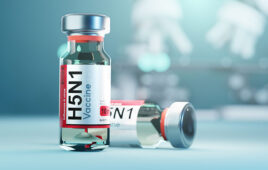Cell Therapeutics, Inc. and Chroma Therapeutics Ltd. announced results from a phase II OPAL study of tosedostat in elderly patients with relapsed or refractory acute myeloid leukemia (AML).
Tosedostat is a novel, orally administered AADR (amino acid deprivation response) inducer, which targets and deprives sensitive tumor cells of amino acids by blocking protein recycling resulting in tumor cell death.
The study concluded that once daily oral tosedostat was well-tolerated and demonstrated encouraging response rates at the interim evaluation time point including a high response rate among patients who received prior hypomethylating agents, which suggests combination studies of tosedostat with hypomethylating agents in first-line elderly AML patients should be investigated.
“While only interim response evaluation data is available, the results are very encouraging especially when one considers the fragile and difficult to treat nature of the patient population studied,” says Jorge Cortes, MD, of the University of Texas M.D. Anderson Cancer Center, an investigator on the tosedostat study. “An interesting observation is that 9 of the 15 responders were observed in patients who received prior hypomethylating agent therapy. These preliminary results support the preclinical data and suggest a rationale for exploring tosedostat in the types of patient usually treated with hypomethylating agents like decitabine or azacytidine in both elderly AML and MDS (myelodysplastic syndrome).”
The phase II study enrolled 73 patients randomized to two tosedostat dose regimens—120 mg once daily for six months or 240 mg once daily for two months followed by 120 mg once daily for four months. The median age of the patients was 72 years old.
Prior primary induction therapy for AML included 61% of the patients treated with Ara-C plus anthracycline or other Ara-C regimens, 33% of the patients treated with hypomethylating agents and 4% of the patients treated with other regimens. Fifty-two percent had been refractory to primary induction therapy and 21% had shown a response of less than six months. The overall response rate to tosedostat was 21% and was similar between treatment arms. In patients who were evaluable the response rate was 30%. Nine of the 15 responders (60%) had received prior hypomethylating agents suggesting that these patients were more likely to respond to tosedostat than those treated with traditional AML therapy. Tosedostat was generally well-tolerated. The most common grade >/= 3 treatment-related adverse events were febrile neutropenia (in 29% of patients) and thrombocytopenia (in 22% of patients).
“While being only interim data, the observed disease control rate at 3 months of 51% (bone marrow CR/PR/SD) with 30% of evaluable patients having a bone marrow response are encouraging results in such a difficult to treat disease,” says Jack Singer, MD, chief medical officer of CTI. “Of great interest, tosedostat was most active in patients with prior hematologic disorders such as myelodysplastic syndromes that had evolved into AML and was particularly active in patients that had failed prior therapy with standard hypomethylating agents. If these data continue to hold up on the six month evaluation, we believe these results would support exploration of tosedostat combination with a hypomethylating agent as first-line therapy for elderly patients with AML and MDS.”
Release Date: June 6, 2011
Source: Cell Therapeutics, Inc.
Filed Under: Drug Discovery




